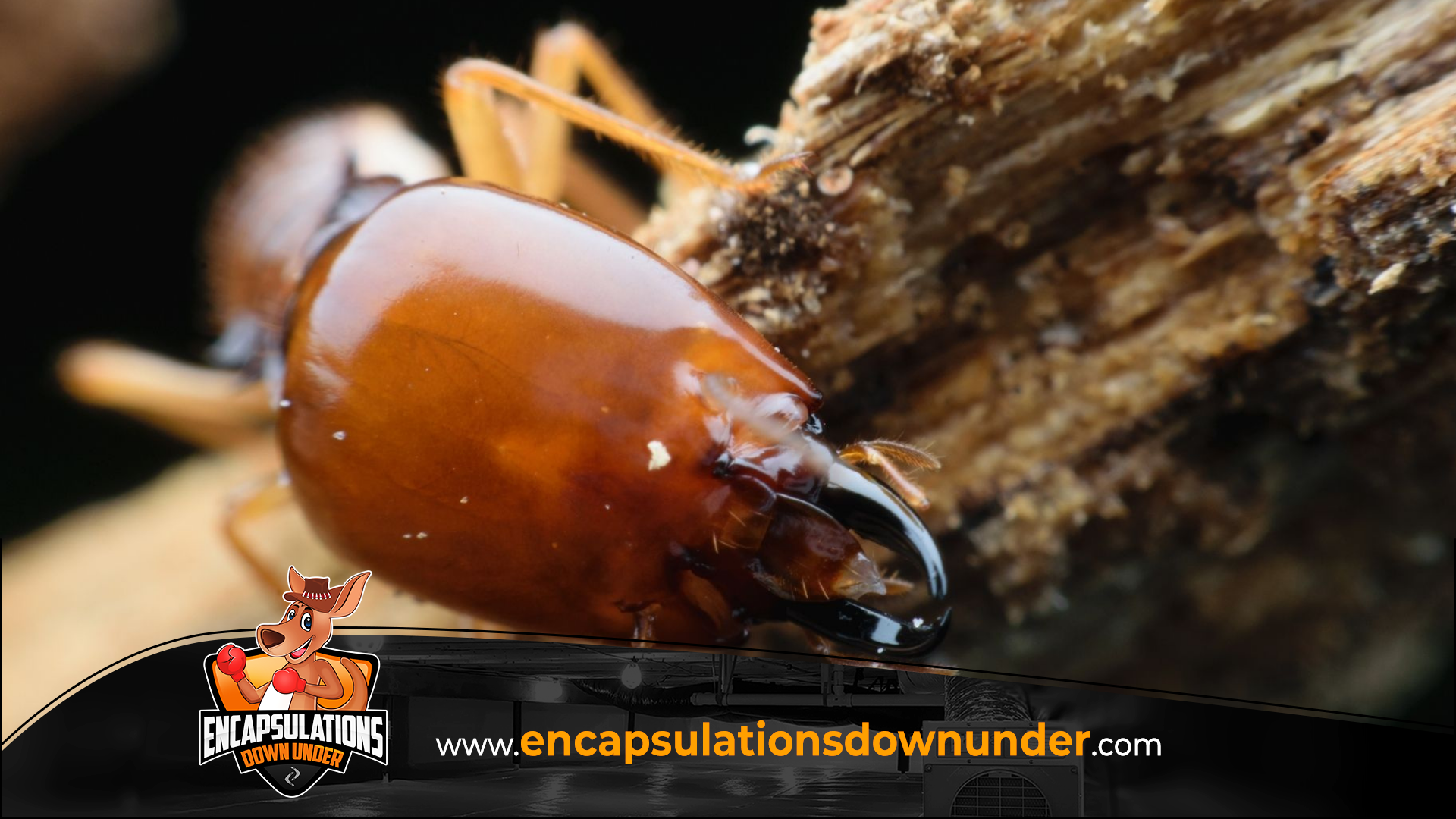Termite Damage Repair In Muncie, IN
Muncie Termite Damage Repair
We offer Termite Damage Repair services in Muncie, Indiana for crawl spaces and basements. If your home has structural damage due to a termite infestation, we can help. We have been repairing floor joist, beam, band board, and more that have been destroyed by termites. We are sure you have any questions about this service, so we look forward to speaking with you.
Signs You Need Termite Damage Repairs:
- Worn-out looking drywall.
- Water-damaged paint peeling as it may not be water damage.
- Hollow-sounding wood.
- Drywall pinholes.
- Buckling laminate or hardwood floors.
- Tiles loosening on your floor.
- Squeaky floorboards.
- Rotten wood or at least appears to be wood rot.
- Awnings or doors.
- Maze-like furniture, floorboards, or walls.
- Drywood termite pellet.
- After-swarm wing piles.
- Mud tubes on your home's foundation.
- Termite swarms on your property.
Benefits of Hiring Us:
- Be more confident and have peace of mind knowing that termite damages are being handled.
- Quick, efficient termite damage repairs.
- Easy and cost effective solutions.
Contact us today for more info on
Termite Damage Repair cost.
Can termite damage be fixed?
Termite damage may undoubtedly be treated, either by replacing the damaged wood with new wood or by strengthening the damaged wood with extra support. The level of termite damage to the wood determines the method of repair. More severe damage will very definitely necessitate tear out and replacement.
How fast can termites destroy a house?
In ideal conditions, a swarm of around 2 million termites might inflict major damage in the first several months. A house can be completely demolished in a year or two.
How long does it take for termites to infest a house?
Termite damage can take anywhere from 3 to 8 years to appear, depending on the size of the colony.
Why do termites suddenly appear?
Swarming occurs when a termite colony has attained critical mass and is ready to expand. This happens once a year in most colonies. Hundreds, if not thousands, of alates, or swarmers, are created only for reproduction and expansion.
Can you live in a house with termites?
If termites have already caused havoc on the foundations, beams, and other structural supports of a building or residence, it may be dangerous to live in. This is a severe safety hazard since a strong wood structure becomes weak and flimsy.
How much does it cost to fix termite damage?
Termites and other pests are estimated to inflict $30 billion in damage to crops and man-made structures in the United States each year. A termite-damaged homeowner will pay an average of $3,000 to restore the damage.
Is termite damage covered by homeowners insurance?
Termite damage is not covered by house insurance because termites are classified as insects, and home insurance plans do not cover damage caused by insects. Insurers consider insects to be an avoidable problem, shifting responsibility back to the homeowner.
What can be mistaken for termites?
The most usually mistaken insects as termites are flying ants. Carpenter ants are the most frequent type of ant to fly over your house, but they are not the only one. Moisture ants, black garden ants, and pavement ants are other possible imposters.
How much do termites damage devalue a home?
The finding of termites on your home might diminish its value by around 20% if the infestation is discovered in time to be treated. Treating your property as soon as you see evidence of a termite infestation will help you keep your home's worth in the long run.
Is termite damage a deal breaker?
Unless there is substantial and unresolved structural damage to the property caused by termites, termite damage should not be a deal breaker in most circumstances. In both circumstances, you may use the new knowledge to haggle with the seller and their agent.
When should you fix termite damage?
Repairs should not begin until a professional pest specialist determines that termites are no longer present and that the risk of a new infestation has been eradicated. The termite inspector will be able to provide services for active infestations as well as prevention measures.
Does termite eat drywall?
Sheetrock, often known as drywall, is a type of wall and ceiling covering that is frequently used in dwellings. It's composed of plaster panels that are surrounded on all sides by thick sheets of paperboard. Termites may easily feed on drywall and cause damage since it is mostly formed of cellulose.
Can you paint over termite damage?
Painting over termite damage is not only wasteful, but it is also illegal in several circumstances. If you want to sell your property in the future, an inspector will be able to determine if you just painted over the damage.
Do termites burrow through drywall?
While termites prefer to feed on cellulose in wood, they are prepared to chew through other cellulose-containing materials to achieve their nutritional requirements. Termites, for example, can eat their way through a variety of construction materials, including soil, sheetrock, and, yes, drywall.
Should termite damaged wood be replaced?
Termite damage that extends beyond the surface of the wood must be eliminated. If the colony has infiltrated the structure of your home, it is safer to replace the wood, especially in load-bearing sections. Wood hardeners, on the other hand, may be used to clear minor damage and provide support.
What if you find termite damage but no termites?
In the absence of active termites, the appearance of historic termite damage just reveals that these wood-destroying parasites formerly lived on your land. That doesn't stop them from causing havoc on load-bearing walls, support beams, and other timber structures.
How destructive are termites?
Because of their ability to gnaw through wood, flooring, and even wallpaper unnoticed, termites are known as quiet destroyers. Because they eat 24 hours a day, seven days a week, subterranean termites are by far the most dangerous termite species. Millions of termite workers can be found in termite colonies.
How do you test wood for termite damage?
Termite damage can cause wavy timber or hollowed-out sections. Wet rot may make wood seem darker than its surroundings and feel mushy and spongy. When dry rot is handled, the wood might shatter and disintegrate. Fungi can be seen growing on decaying wood.
Got a Question? We’re Here to Help.
You can arrange an appointment or make an enquiry by phone or email, or get in touch to us via our contact form or clicking the button below.
Frequently Asked Questions
Please take a moment to read answers to our most frequently asked questions about our services.
- How do you fix termite damaged wood? If you notice termite damage early enough, you can use a wood hardener to cover the decayed area. First, remove the rotted wood with a chisel. Rotted wood can be identified as discolored or decayed looking.
If you catch termite damage early enough, you can cover the rotting area with a wood hardener. Remove the rotten wood with a chisel first. The stained or rotting appearance of rotted wood can be determined.
It's best not just for your house, but also for you, because mold spores develop when moisture levels are too high, causing allergies!
- How do they fix structural damage from termites?
When it comes to restoring termite-damaged wood, you generally have two options.
Damaged wood should be removed and replaced with fresh wood.
To provide support, attach new wood to the damaged timber (more cost-effective when feasible).
- Can extensive termite damage be repaired?
So, sure, termite damage may be rectified, either by replacing the damaged wood with new wood or by adding more support to the damaged wood. The manner of repair is determined by the extent of termite damage to the wood. More serious damage will almost certainly necessitate tearing out and replacing.
- Should I replace termite damaged wood?
When termite damage extends beyond the surface of the wood, it must be removed. If the colony has infiltrated your home's structure, replacing the wood, especially in load-bearing places, is a better option. Cleaning and adding support with wood hardeners, on the other hand, can be done for superficial damage.
- How do you fix termite damaged floor joists?
The standard procedure is to install a "sister" joist alongside the existing joist to replace the old joist's lost strength. This method works for a joist that has been partially chewed through but hasn't begun to sag (otherwise, consult a professional).
Cities We Proudly Service
To see all the cities we provide crawl space waterproofing services, click on the dropdown below.
- Service Areas
Albany, IN
Daleville, IN
Eaton, IN
Gaston, IN
Muncie, IN
Oakville, IN
Selma, IN
Yorktown, IN
Check Out All of Our Services
Contact Us Today!
Encapsulations Down Under will do everything we can to ensure your experience with us is stellar.
Request A FREE Estimate Today!
Request a Free Estimate Form
We will get back to you as soon as possible.
Please try again later.
24-Hour Emergency Service
Contact Information
Phone: 317-707-9444
Address:
4600 E 25 N
Muncie, Indiana 47303
Business Hours:
Mon - Fri 8:00 am - 9:00 pm
Sat - Sun Closed
Appointments Available
Servicing Muncie, IN and Nearby Cities
Encapsulations Down Under provides crawl space and basement waterproofing, crawl space encapsulation and foundation repairs to solve moisture and mold problems in Muncie, IN and surrounding areas.
Related Services in Muncie, IN
Please see our most requested services listed below. If you have a flooded crawl space due to a lack of a french drain, sump pump, we can help! If you need of mold removal due to high humidity levels, we will make sure to your crawl space stays clean, dry and healthy!
Crawl Space Vapor Barrier Installation
An inexpensive method of dealing with moisture control issues in the basement or crawl space is installing a vapor barrier in the space. Designed to prevent moisture, water, and damp air from entering the home through the crawl space floor, crawl space vapor barriers are installed in crawl spaces. This helps to avoid the growth of mold and mildew, which can result in structural damage to your home as well as uncomfortably damp living conditions for your family!
Crawl Space Mold Remediation
One of the most critical phases in resolving moisture control issues is the removal of mold from the crawl space. Mold may quickly become a serious problem in a home, and those who take action to clean up and remediate the situation as soon as possible will have a better chance of preventing the problem from spreading. Getting rid of mold before it has a chance to spread throughout your entire home will save you both time and money in the long run.
Crawl Space Waterproofing
Crawl Space Waterproofing is a need. In addition to protecting your property against water damage, it can also help you avoid the health and safety problems associated with mold!
Schedule Your FREE Crawl Space Evaluation!
Did you know YOU DON'T HAVE TO BE HOME for us to provide you with your 100% FREE crawl space inspection and report?
Muncie Office:
Encapsulations Down Under
Phone: 317-707-9444
Email: info@encapsulationsdownunder.com
Address:
4600 E 25 N
Muncie, Indiana 47303
Hours:
Mon-Sun 8AM to 9PM EST
Indianapolis Office:
Encapsulations Down Under
Phone: 317-754-2884
Email: info@encapsulationsdownunder.com
Address: 3747 N Sadlier Dr
Indianapolis, IN 46226
Hours:
Mon-Sun 8AM to 9PM EST
Services
Copyright © 2021 Encapsulations Down Under | Website Design & SEO by Disruhptiv Marketing & Media


